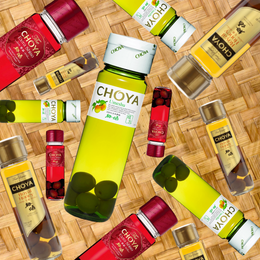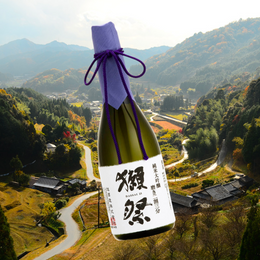Inside the Rum Masterclass Everyone's Talking About: The 8 Marks of Hampden Estate Rum

The perfect festive way to end off the Hampden Estate Rum masterclass - with Hampden DOK Rum-infused panettone.
Hampden Estate and Jamaican rum have a bit of a reputation for being shrouded in some mystery – rum production in Jamaica has a history that spans over close to 300 years (close to 250 years for Hampden Estate), while many aspects of the production process were not formalized or written down as distillers changed through the years, with many of the exact formulations being lost to time. And we often see these cryptic-looking acronyms on the labels of bottles like “LFCH” or “HLCF” that hardly gives a new drinker any clue about what to really expect at first sip.
There are also questions which we do not really have answers for (How could it even be possible to achieve the levels of high ester count that Hampden Estate does? What exactly is in the dunder that’s added to the rum distillate? And what’s really in the muck?). For many, the mystery is part of the adventure and fun of the whole experience – it throws us into the deep end where we have to do our own digging, our own tasting, our own investigative work, and our own corroborating with other rum enthusiasts.
So you can imagine it was quite the treat for us when we had the chance to attend Daniele Biondi’s Masterclass on exploring the 8 Marks of Hampden Estate Rum, held during this year’s Whisky Live Singapore 2022 event. Daniele is the current Global Export and Content Manager for La Maison & Velier, and a huge rum veteran himself, having visited all 53 rum distilleries across the Caribbean (not including many more around the globe). To say that Daniele knows his stuff is almost a bit of an understatement. He lives, laughs, loves rum. Here, we had the rare chance to hear it from the horse’s mouth and give our speculations a rest, putting on our scientific and empirical glasses as we explore Hampden’s new 8 Marks Collection.

What is a Mark?
Throughout history, all Jamaican distilleries produce a wide range of rum distillates, and each distillate has its own unique flavour profile and distinctive character – a product of the compositions of flavours from varying combinations of esters, aldehydes, superior alcohols, acids, and flavour molecules. This results in different batches with their own unique flavour profiles that can be tropical and fruity to intensely aromatic and funky. Each batch is given a unique acronym known as “mark”, and the spirit can be identified and measured based on the level of esters in it, according to an index of grams of esters per hector litre of pure alcohol (gr/hlpa). Take a look at Hampden Estate’s marks:

(Source: Hampden Estate)
To the untrained eye, these marks may look like some kind of esoteric military code, or an inside joke that only those in the know would know. But you know, it’s no big secret – just the mark of different distillers/owners who have worked at the Hampden Estate throughout its history, representing their unique distillate, flavour composition, and ester level. There marks are registered with the Jamaican regulators and are set in stone from henceforth!
The Hampden 8 Marks Collection
The new 8 Marks Collection from Hampden Estate presents all the unique identities and Hampden marks together, in succeeding order of ester level. The collection allows the drinker to taste, understand, and appreciate the nuances and variations between the 8 marks.


For the scientific-minded or those who simply love geeking out, the collection also contains information on the specificities of the 8 marks – the different combinations of raw materials and production processes, data from chemical analysis conducted at the Hampden lab through gas chromatography. This way, you can cross-refer your own empirical tasting notes from your palate with the data and information provided for an in-depth understanding and experience of the 8 marks of Hampden Estate.
A real treat indeed for rum fans and fans of Hampden Estate, who may be well familiar with how elusive and mysterious the process and ingredients behind Hampden rums may be – this is a great way to do a little investigative work. And just imagine what a treat it would be tasting a Daiquiri flight made with rums from each mark!
The Natural and Gritty Fermentation of Hampden Estate
The passion and knowledge of rums that Daniele has is palpable. In the room, we are transported to Hampden Estate in Jamaica – a living historical marvel built in the 18th century, with the original fermentation zone, known as The Boiling House, still in use and unchanged since the 1700s.
Daniele shows us snippets of the magic ingredient to Hampden’s intense terroir-heavy funk – the wild fermentation process. Fermentation vats remain open and exposed at the top – allowing wild yeast into the fermentation. In the video, the amber liquid sits ominously, stewing as large bubbles fizzle and pop at the top of the vats – a terror and an absolute delight to behold. This fermentation with the natural environmental yeast allows the spirits to express the terroir of the surroundings, an atmosphere that has remain largely unaltered for almost 200 years.

That's scary stuff!
Next, we see a thick, textured, rust-coloured liquid being poured into the fermentation mixture. We’re told that this additional liquid is dunder, essentially the leftover liquid from the previous batch of rum distillation, full of yeast compounds to give the fermentation process an even bigger boost and packing the rum full of esters for the Jamaican rum funk.
We’re then also introduced to the muck of Hampden Estate – a significant culprit behind the high ester count and intense aromatic bouquet of Hampden rums. The muck (thick residual distillate from previous rum batches) contains a large amount of dead yeast and a high nitrogen and bacterial content. The muck is placed into a muck pit that looks like a type of grave, where it’s left to sit and settle, activating and fermenting to produce different types of flavour compounds.

Not just an urban legend - dunder and muck of Hampden Estate.
Rum Chemistry 101
We’re taken out of the tropical grittiness of Hampden Estate in Jamaica, and into the science lab as Daniele gives us a quick chemistry lesson: In our crude and less-than-scientific sense, the process of esterification can be understood in simple terms as:
Alcohol Molecule X Carbossilic Acid => Esters
Our senses perceive the different esters as different flavour notes, such as flowers, peaches, pineapples, and of course, the signature Hampden banana note. The noses of different people may of course perceive these esters as different aromas. Daniele even provides a breakdown for us on what are the particular Ester compounds that produce each distinctive aromatic note.

We start nosing and tasting each of the different marks from the collection and cross-referencing it with lab data on ester counts and chemical composition analysis presented to us, in successive order from the OWH to the DOK. Each mark has a different chemical composition of esters.

The Hampden 8 Marks Collection flight, from the OWH to DOK.
For example, the HLCF (Hampden Light Continental Flavoured), Hampden’s signature balanced rum that’s used as the distillate for the iconic Rum Fire, has a composition of Butyrate, Isoamyl, Caproate, Lactate, Caprylate and Caprate esters. Of course, the names of these ester compounds mean little to us on its own. But our nosing and tasting also reveals notes of ripe bananas, creaminess, and sweet red fruitiness – notes that correspond to Isoamyl, Lactate, and Caproate respectively. Science, man!

Chemical composition breakdown of the HLCF rum.
The different chemical compositions and resulting differences in flavour profiles and characteristics are a product of different combinations of the 5 raw rum-making ingredients used in varying ratios, that produce the different marks. Hampden Estate provides a breakdown of the variations in raw materials used across the different marks along with the 8 Marks Collection:

(Source: Hampden Estate)
Are We Blinded by Ester Levels?
Among the Hampden 8 Marks Collection set, the DOK (Dermot Owen Kelly-Lawson) mark sits at the highest ester level of the collection and the highest ester rum from Hampden Estate and the whole of Jamaica, reaching the maximum legal ester limit of 1600 gr/HLPA. The DOK is also the mark that has garnered a large amount of intrigue from both fanatics and less-than-fanatical rum drinkers, and understandably so - the nose of the DOK was enough to hit us with the intensity of a diesel fuel truck. Of course, an ester level that high is bound to turn some heads.
There is a natural tendency to deviate towards rums with high, higher, and highest ester levels. Almost as if it could be reduced to a simple but misleading heuristic, “the higher the ester level, the better!” Yet reality is obviously more nuanced than any single measurement could capture. The rum experience has more dimensions than just the intensity of the funk. The balance of flavours, taste complexity, and texture is a major aspect of enjoying the unique qualities of each rum too.
Take a look at the chemical analysis of the composition of the DOK:

The DOK has an ester level of 1500 – 1600 gr/HLPA. Looking at the breakdown of non-ethyl acetate esters, we see two: Butyrate and Caproate.
Now have a look at that of the HLCF:

The HLCF has a lower ester level than the DOK, of 400 – 600 gr/HLPA. But take a look at the chemical breakdown of the non-ethyl acetate esters, and you’ll see a much wider range of esters (and flavour profiles), which results in a rum with more complexity and balance.
The idea is not to pit any of the marks against each other, or to say that one is better than the other. In fact, they’re each fantastic in their own way, and it’s clear that different rums are made with different intentions and for different purposes – each expressing a different aspect of Hampden Estate's versatility. You wouldn’t judge a fish by its ability to climb a tree, would you?
Have a closer look at the detailed composition breakdown of each of the marks from OWH to DOK in the Hampden 8 Marks collection, and you can see the variety and nuance between the different expressions that goes beyond ester count:



From the Hampden 8 Marks Collection Set, Courtesy of Hampden Estate
In the World of Rum-Making, Art Imitates Life
“Repetition makes us feel secure and variation makes us feel free.”
– Robert Hass
Rum production is generally still a pretty manual and much less industrial process than other spirits such as whisky, allowing the spirit to reflect a great deal of the natural environment due to the wild fermentation process. Hampden Estate is unique with their use of dunder and muck pits in their fermentation process (there are other Jamaican distilleries that adopt this too, but that’s a story for another day). This wild fermentation process also introduces an element of variability (implied in the term wild), which also means a less standardized and industrial process.
If Daniele has impressed upon us anything about rum and rum-making, it would be this – It’s gritty. It’s wild. It's varied. It’s life itself! And in many ways, that’s exactly the beauty and adventure you get with rum.
Until another time, happy sipping!

@ChopstickPride





